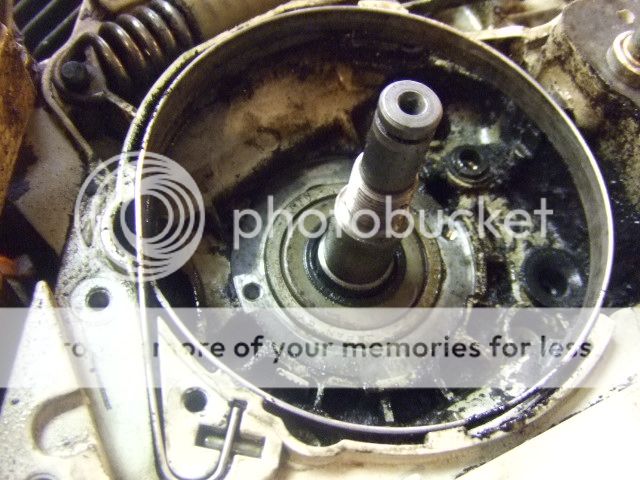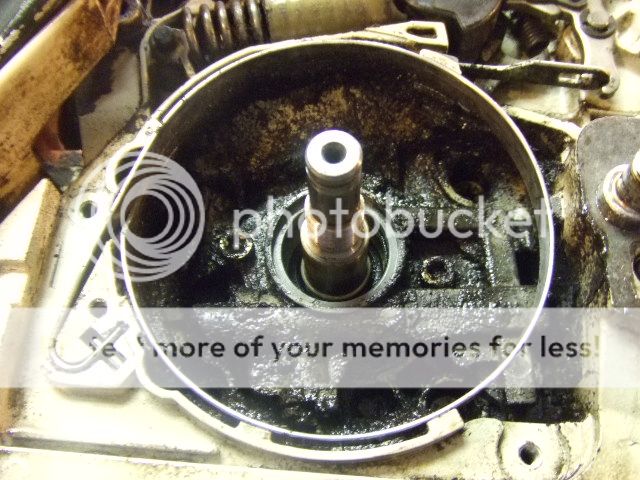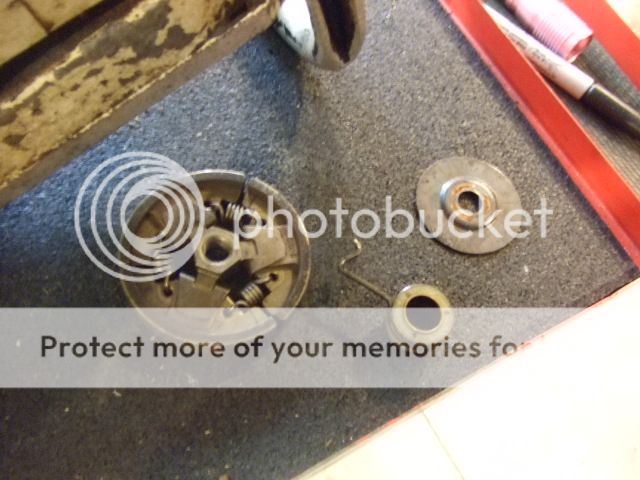After chasing a few problems on my newly acquired 066 Magnum, I decided to do a pressure test. I first tried pulling a vacuum on the fuel tank, but didn't have much luck. I never was able to pull a vacuum using a Mity Vac, but was actually able to pressure the system through the fuel line. Not sure if that is indicative of anything, but I don't believe that is my real issue.
I blocked off the carb using a piece of flat aluminum over a double thick piece of rubber inner tube...
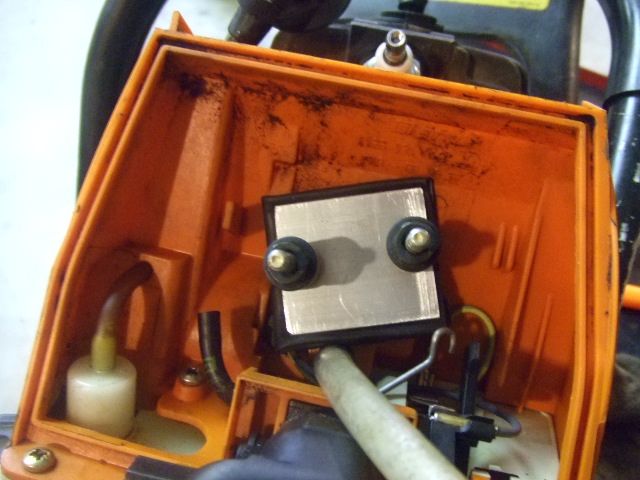
...and did pretty much the same with the exhaust:
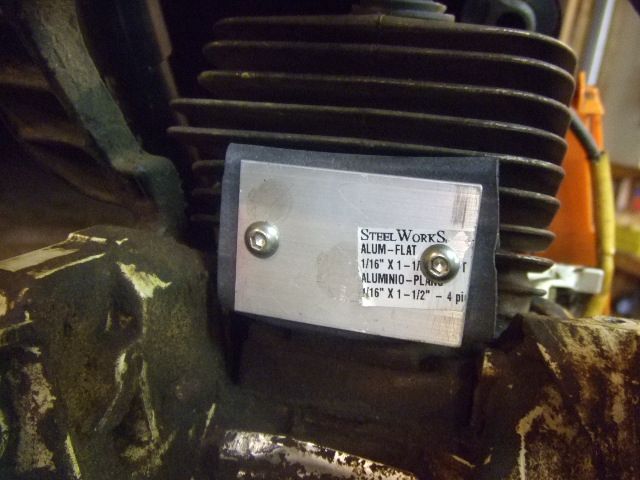
I tried pulling a vacuum with the Mity Vac through the impulse hose, but was never able to pull anything. I then tried blowing throw the same hose, and definitely have a leak. It was difficult to narrow down, but it sounds suspiciously like its coming from behind the clutch assembly here:
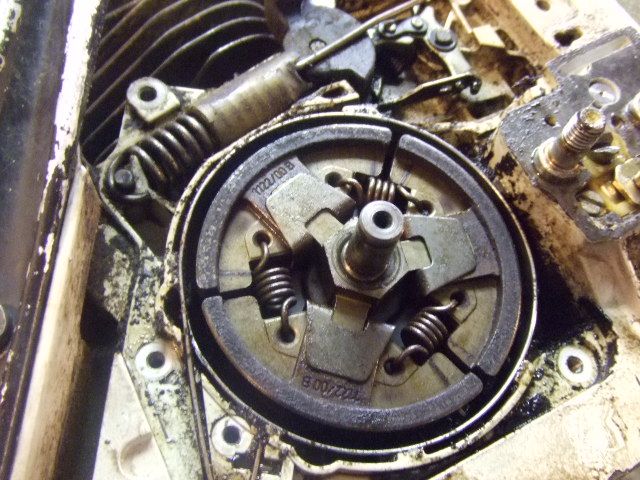
I assume this is likely the clutch side crank seal, but not positive. Assuming it is, what am I in for, and how difficult of a job am I facing? Do I need to tear down the saw further to confirm?
Any suggestions? Thanks!





